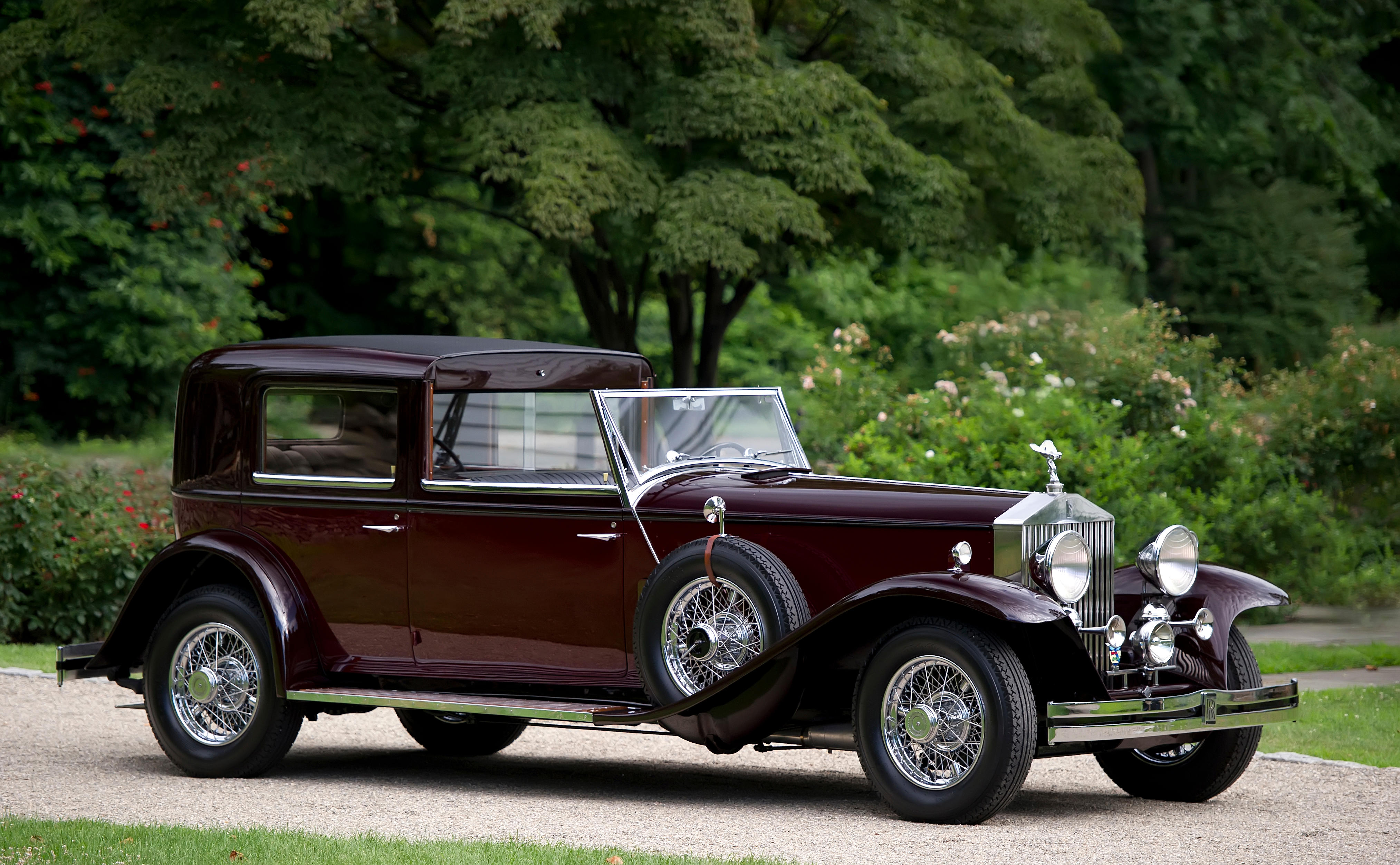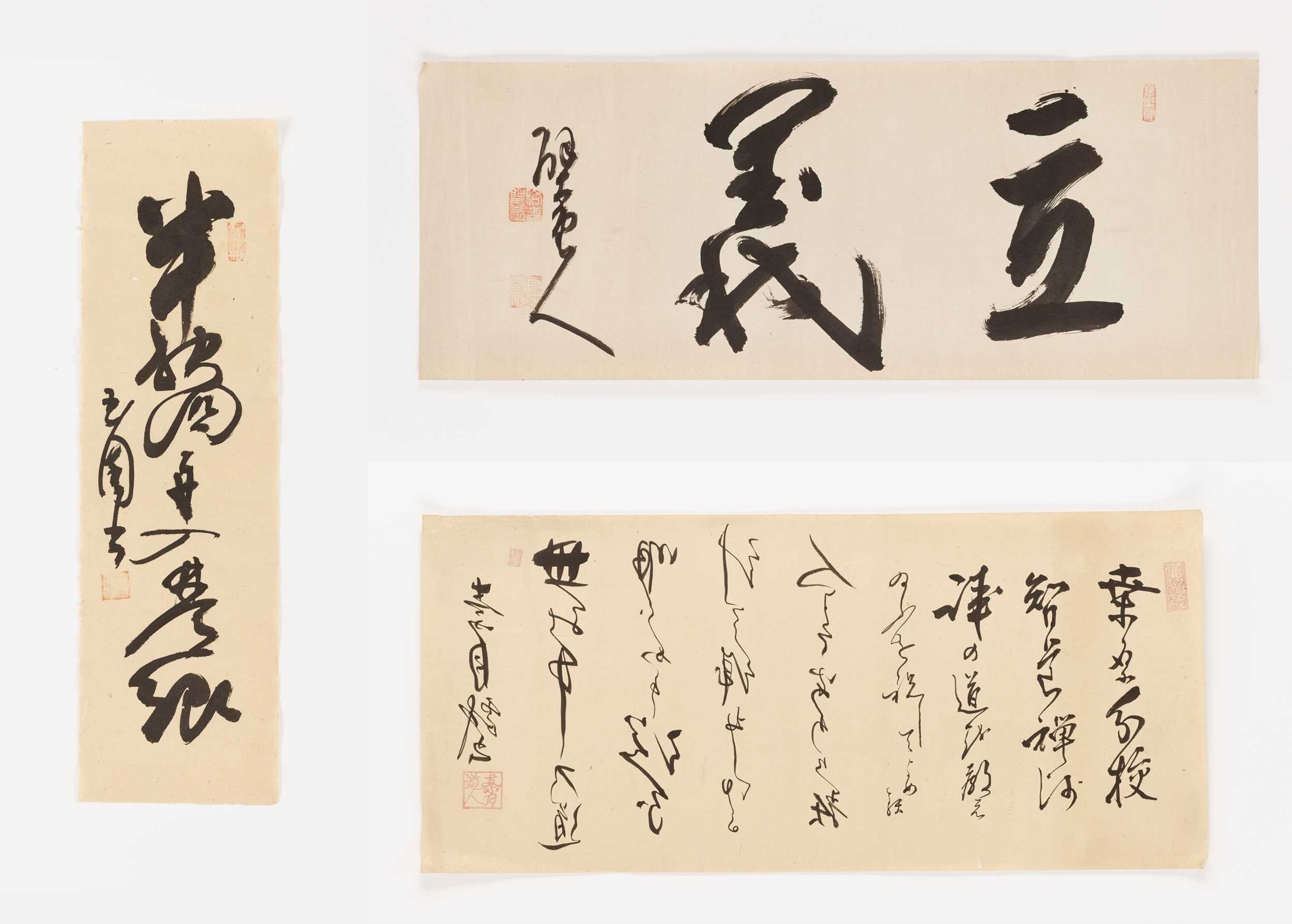Formerly of the Richard Paine Collection 1914 PACKARD SERIES 3-48 (1148) FIVE PASSENGER PHAETON Chassis No. 39441 Olive green with black fenders, belting, chassis and running gear and black tufted long grain leather interior and a black Panasote top Engine: T-head, six cylinder, 525ci., 82bhp at 1,720prm; Gearbox: three-speed manual with reverse; Suspension: semi-elliptic front leaf springs with rear half-elliptic leaf springs and Hartford front and rear shock absorbers; Brakes: rear wheel mechanical drums. Left hand drive. When Alvan Macauley joined the Packard Motor Car Company in 1910 it was unknown what effect this industrial newcomer might have on the relatively young motor car company. After helping restructure the American Arithmometer Company in St. Louis, Missouri, Macauley then helped the company develop further, moving the company and its workers to Detroit and renaming it the Burroughs Adding Machine Company. By 1910 Burroughs had become a striking success and held the majority share of the market. Only a few short months later Macauley accepted the position of General Manager at Packard and began a career that would last well into the late 1930s. By 1912 the company that had been largely successful with the production of four cylinder cars opted to move into the six cylinder market. They did so primarily with speed, agility, tact and elegance. Ironically, the Packard Six became the favored car of those on both sides of the law. It took a Packard Six just thirty seconds to reach 60 mph and the bad guys loved it. At this time the almost magical phrase that would stand by the Packard name and motor car for the ensuing decades through the evolution of automotive design was imparted to the press, when dependability is vital, when high speed is necessary, when a fast getaway is absolutely imperative, Ask The Man Who Owns One. Packard continued mounting its successful campaign of six cylinder engine design for the 1913 model year. The 1913 cars retained their right hand drive configuration, but newly included a direct lubrication of the piston pin bearings that, from its overflow, lubricated the piston and cylinder walls. The 1913 Model 48 also switched from a gas light system to an electric headlamp system, though it retained the combination of oil and electric for the sidelamps. Additionally, the gas tank was moved from below the driver's seat to the rear of the car where it was mounted below the trunk rack. The battery and toolbox were also moved off the running boards to a position below the driver's seat. Packard also diversified its model line up that year and introduced the new 38 Series to complement and increase its impressive pre-existing line up. The 1-38 Series differed from other Packard cars that year as, unlike the 48 Series, it was a left hand drive car that utilized a self starter system in addition to hosting a 60 horsepower motor. In 1914 Packard introduced the 1-38, 2-38, 3-38 and 4-48. The 1-38, 2-38 and 4-48 each utilized an L-head six that developed 60 horsepower. The 3-38 utilized a T-head six which reportedly developed a healthy 82bhp at 1,720rpm. Its parts were interchangeable with those of the T-head models of the 1913 cars. The 3-38 (1448) featured a rear mounted sliding gear transmission and was shaft drive through spiral bevel gears. It also had a combination self starter and generator by Delco. Body style choices were quite plentiful and included a total of 14 different options. More impressively Packard increased its color choices offering over 40 different paints configured in a plethora of attractive single and two-tone schemes. All wheelbases on the 3-38 Series (with the exclusion of the runabout, 121½ were uniform at 139 inches. The 1914 Packard 3-48 Series was indeed the highlight of the model year. Though only subtle visual changes were introduced on the cars, the variety of discrete mechanical upgrades and refinements meant that this high horsepower car was also the smoothest runni
Formerly of the Richard Paine Collection 1914 PACKARD SERIES 3-48 (1148) FIVE PASSENGER PHAETON Chassis No. 39441 Olive green with black fenders, belting, chassis and running gear and black tufted long grain leather interior and a black Panasote top Engine: T-head, six cylinder, 525ci., 82bhp at 1,720prm; Gearbox: three-speed manual with reverse; Suspension: semi-elliptic front leaf springs with rear half-elliptic leaf springs and Hartford front and rear shock absorbers; Brakes: rear wheel mechanical drums. Left hand drive. When Alvan Macauley joined the Packard Motor Car Company in 1910 it was unknown what effect this industrial newcomer might have on the relatively young motor car company. After helping restructure the American Arithmometer Company in St. Louis, Missouri, Macauley then helped the company develop further, moving the company and its workers to Detroit and renaming it the Burroughs Adding Machine Company. By 1910 Burroughs had become a striking success and held the majority share of the market. Only a few short months later Macauley accepted the position of General Manager at Packard and began a career that would last well into the late 1930s. By 1912 the company that had been largely successful with the production of four cylinder cars opted to move into the six cylinder market. They did so primarily with speed, agility, tact and elegance. Ironically, the Packard Six became the favored car of those on both sides of the law. It took a Packard Six just thirty seconds to reach 60 mph and the bad guys loved it. At this time the almost magical phrase that would stand by the Packard name and motor car for the ensuing decades through the evolution of automotive design was imparted to the press, when dependability is vital, when high speed is necessary, when a fast getaway is absolutely imperative, Ask The Man Who Owns One. Packard continued mounting its successful campaign of six cylinder engine design for the 1913 model year. The 1913 cars retained their right hand drive configuration, but newly included a direct lubrication of the piston pin bearings that, from its overflow, lubricated the piston and cylinder walls. The 1913 Model 48 also switched from a gas light system to an electric headlamp system, though it retained the combination of oil and electric for the sidelamps. Additionally, the gas tank was moved from below the driver's seat to the rear of the car where it was mounted below the trunk rack. The battery and toolbox were also moved off the running boards to a position below the driver's seat. Packard also diversified its model line up that year and introduced the new 38 Series to complement and increase its impressive pre-existing line up. The 1-38 Series differed from other Packard cars that year as, unlike the 48 Series, it was a left hand drive car that utilized a self starter system in addition to hosting a 60 horsepower motor. In 1914 Packard introduced the 1-38, 2-38, 3-38 and 4-48. The 1-38, 2-38 and 4-48 each utilized an L-head six that developed 60 horsepower. The 3-38 utilized a T-head six which reportedly developed a healthy 82bhp at 1,720rpm. Its parts were interchangeable with those of the T-head models of the 1913 cars. The 3-38 (1448) featured a rear mounted sliding gear transmission and was shaft drive through spiral bevel gears. It also had a combination self starter and generator by Delco. Body style choices were quite plentiful and included a total of 14 different options. More impressively Packard increased its color choices offering over 40 different paints configured in a plethora of attractive single and two-tone schemes. All wheelbases on the 3-38 Series (with the exclusion of the runabout, 121½ were uniform at 139 inches. The 1914 Packard 3-48 Series was indeed the highlight of the model year. Though only subtle visual changes were introduced on the cars, the variety of discrete mechanical upgrades and refinements meant that this high horsepower car was also the smoothest runni















Testen Sie LotSearch und seine Premium-Features 7 Tage - ohne Kosten!
Lassen Sie sich automatisch über neue Objekte in kommenden Auktionen benachrichtigen.
Suchauftrag anlegen